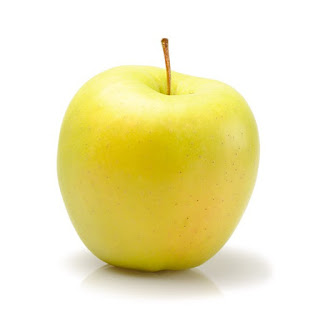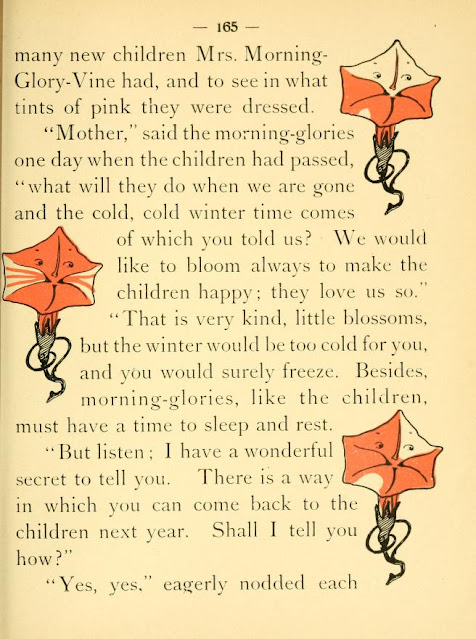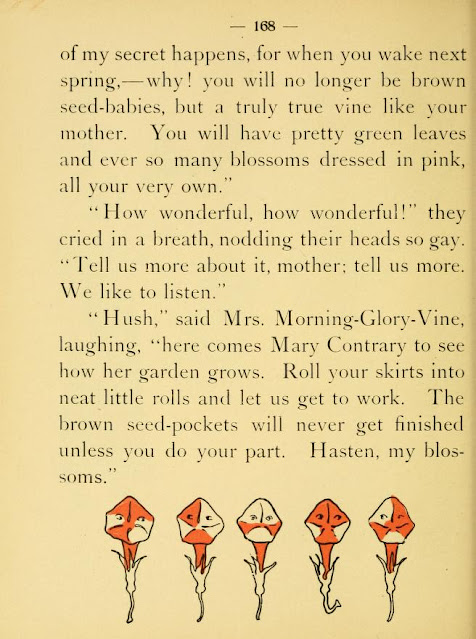Apple Orchards are turning into cider mills complete with all manner of activities, crowds, and yellow jackets! Just because they are yellow with black stripes doesn't make them bees! They are members of the WASP family . . . read Bees and the Anishinaabe for a story from 2014 about this irritable and irritating cousin of the useful bee.
But whether you have any of the above, the apple trees should be drawing our attention as autumn starts bringing the apple into the spotlight. Carolyn Sherwin Bailey from her Tell Me Another Story has a story worth remembering and a bit of talking about afterwards.
THE THREE APPLES
The old apple tree stood in the orchard with the other trees, and all
summer long it had stretched out its branches wide to catch the rain
and the sun to make its apples grow round and ripe. Now it was fall,
and on the old apple tree were three great apples as yellow as gold
and larger than any other apples in the whole orchard. The apple tree
stretched and reached as far as it could, until the branch on which
the three gold apples grew hung over the orchard wall. There were the
three great apples, waiting for some one to pick them, and as the wind
blew through the leaves of the apple tree it seemed to sing:
"Here in the orchard are apples three,
Who uses one well shall a treasure see."
And one morning Gerald came down the lane that passed by the orchard
wall. He looked longingly at the three gold apples, wishing, wishing
that he might have one. Just then the wind sang its song again in the
leaves of the apple tree and, plump, down to the ground, right at
Gerald's feet, fell one of the three gold apples.
He picked it up and turned it round and round in his hands. How sweet
it smelled, and how mellow and juicy it was! Gerald could think of
nothing so good to do with such a beautiful ripe apple as to eat it.
He put it to his mouth and took a great bite of it, then another bite,
and another. Soon there was nothing left of the apple but the core,
which Gerald threw away. He smacked his lips and went on his way, but
the wind in the apple trees sang, sorrowfully, after him:
"Here in the orchard are apples two,
But gone is the treasure that fell for you."
And after a while Hilda came down the lane that passed by the orchard
wall. She looked up at the two beautiful gold apples that hung on the
branch of the old apple tree, and she listened to the wind as it sang
in the branches to her:
"Here in the orchard are apples two,
A treasure they hold for a child like you."
Then the wind blew harder and, plump, an apple fell in the lane
right in front of Hilda.
She picked it up joyfully. She had never seen so large and so golden
an apple. She held it carefully in her clasped hands and thought what
a pity it would be to eat it, because then it would be gone.
"I will keep this gold apple always," Hilda said, and she wrapped it
up in the clean handkerchief that was in her pocket. Then Hilda went
home, and there she laid away in a drawer the gold apple that the old
apple tree had given her, closing the drawer tightly. The apple lay
inside, in the dark, and all wrapped up, for many days, until it
spoiled. And when Hilda next went down the lane and past the orchard,
the wind in the apple tree sang to her:
"Only one apple where once there were two,
Gone is the treasure I gave to you."
Last of all, Rudolph went down the lane one fine fall morning when the
sun was shining warm and the wind was out. There, hanging over the
orchard wall, he saw just one great gold apple that seemed to him the
most beautiful apple that he had ever seen. As he stood looking up at
it, the wind in the apple tree sang to him, and it said:
"Round and gold on the apple tree,
A wonderful treasure, hanging, see!"
Then the wind blew harder, and down fell the last gold apple of the
three into Rudolph's waiting hands.
He held it a long time and looked at it as Gerald and Hilda had,
thinking how good it would be to eat, and how pretty it would be to
look at if he were to save it. Then he decided not to do either of
these things. He took his jack-knife out of his pocket and cut the
gold apple in half, straight across, and exactly in the middle between
the blossom and the stem.
Oh, the surprise that waited for Rudolph inside the apple! There was a
star, and in each point of the star lay a small black seed. Rudolph
carefully took out all the seeds and climbed over the orchard wall,
holding them in his hand. The earth in the orchard was still soft, for
the frost had not yet come. Rudolph made holes in the earth and in
each hole he dropped an apple seed. Then he covered up the seeds and
climbed back over the wall to eat his apple, and then go on his way.
But as Rudolph walked down the lane, the orchard wind followed him,
singing to him from every tree and bush,
"A planted seed is a treasure won.
The work of the apple is now well done."
Or as another site in thinking about philosophy reminds us "There's a Brilliant Star Inside of Every Apple."
Have you taken the apple cores and at least tossed them into a field, especially in an area unlikely to be mowed? I love to do that. Maybe a deer will find that apple core and plant it somewhere else along with its own fertilizer.
Similarly I love the story of how the Granny Smith apple came to be. A site called Culinary Lore says there are various versions of the story, but
The most common origin story of Granny Smith apples (Some folks just call them granny apples) is
that, around 1868 in New South Wales, Mrs. Smith had dumped a crate of
old rotten apples French Crab Apples from Tasmania in her garden and
then later found an apple sapling growing there. The tree grew to
produce green tart apples “that had never grown before.” They
subsequently became famous not only in Australia but were shipped all
over the world, including the U.S.
It helps to have other apple trees near enough to fertilize your "planted" tree, but even old untended apple trees can produce crops. Our apple trees furnish treats for neighbors' donkeys and horses and we're happy to have them appreciated.
The apple in this story is probably the popular Golden Delicious.
My favorite apple is the Ida Red, but I enjoy Granny Smith apples, too. That's the great thing about apples, there's so many varieties. Enjoy! -- (and maybe toss it in a field after you eat it.)
******************
This
is part of a series of postings of stories under the category,
"Keeping the Public in Public Domain." The idea
behind Public Domain was to preserve our cultural heritage after the
authors and their immediate heirs were compensated. I feel
strongly current copyright law delays this intent on works of the
20th century. My
own library of folklore includes so many books within the Public
Domain I decided to share stories from them. I hope you enjoy
discovering new stories.

At
the same time, my own involvement in storytelling regularly creates
projects requiring research as part of my sharing stories with an
audience. Whenever that research needs to be shown here, the publishing
of Public Domain stories will not occur that week. This is a return to
my regular posting of a research project here. (Don't worry, this
isn't dry research, my research is always geared towards future
storytelling to an audience.) Response has convinced me that "Keeping
the Public in Public Domain" should continue along with my other
postings as often as I can manage it.
Other
Public Domain story resources I recommend-
There
are many online resources for Public Domain stories, maybe none for
folklore is as ambitious as fellow storyteller, Yoel Perez's
database, Yashpeh,
the International Folktales Collection. I have long
recommended it and continue to do so. He has loaded
Stith Thompson's Motif Index into his server as a database so
you can search the whole 6 volumes for whatever word or expression
you like by pressing one key. http://folkmasa.org/motiv/motif.htm
You may have noticed I'm no
longer certain Dr. Perez has the largest database, although his
offering the Motif Index certainly qualifies for those of us seeking
specific types of stories. There's another site, FairyTalez
claiming to be the largest, with "over 2000 fairy tales,
folktales, and fables" and they are "fully optimized for
phones, tablets, and PCs", free and presented without ads.
Between those two sites, there
is much for story-lovers, but as they say in infomercials, "Wait,
there's more!"
The
email list for storytellers, Storytell,
discussed Online Story Sources and came up with these additional
suggestions:
-
Story-Lovers - http://www.story-lovers.com/ is now only accessible
through the Wayback Machine, described below, but the late Jackie Baldwin's
wonderful site lives on there, fully searchable manually (the Google
search doesn't work), at https://archive.org/ . It's not easy, but go to Story-lovers.com snapshot for October 22 2016 and you can click on SOS: Searching Out Stories to scroll down through the many story topics and click on the story topic that interests you.
- Zalka Csenge Virag - http://multicoloreddiary.blogspot.com
doesn't give the actual stories, but her recommendations, working her
way through each country on a continent, give excellent ideas for
finding new books and stories to love and tell.
You're
going to find many of the links on these sites have gone down, BUT
go to the Internet Archive
Wayback Machine to find some of these old links. Tim's
site, for example, is so huge probably updating it would be a
full-time job. In the case of Story-Lovers, it's great that
Jackie Baldwin set it up to stay online as long as it did after she
could no longer maintain it. Possibly searches maintained it.
Unfortunately Storytell list member, Papa Joe is on both Tim
Sheppard's site and Story-Lovers, but he no longer maintains his old
Papa Joe's Traveling Storytelling Show website and his Library
(something you want to see!) is now only on the Wayback Machine. It
took some patience working back through claims of snapshots but finally
in December of 2006 it appears!
Somebody
as of this writing whose stories can still be found by his website
is the late Chuck Larkin - http://chucklarkin.com/stories.html.
I prefer to list these sites by their complete address so they can
be found by the Wayback Machine, a.k.a. Archive.org, when that
becomes the only way to find them.
You
can see why I recommend these to you.
Have fun
discovering even more stories








.jpg)







.jpg)




